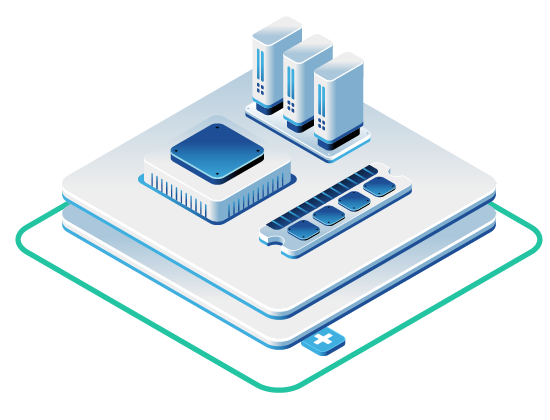Modern GPU technologies offer multiple methods for sharing hardware resources across workloads. Two widely used approaches are Multi-Instance GPU (MIG) and time-slicing. Both methods aim to improve utilization and reduce costs, but they differ significantly in implementation, performance, and isolation.
Multi-Instance GPU (MIG)
MIG is a feature introduced with NVIDIA’s Ampere architecture. It partitions a single physical GPU into multiple smaller, isolated GPU instances. Each instance behaves like an independent GPU, with dedicated compute cores, memory slices, and L2 cache.
Key Features of MIG:
- Hardware-level partitioning: Provides dedicated resources such as memory controllers, streaming multiprocessors, and cache slices to each instance.
- Isolation: Ensures fault isolation, memory bandwidth quality of service (QoS), and predictable performance. One instance’s workload cannot interfere with others.
- Scalability: Supports up to seven instances per GPU on models like the A100 and H100.
- Deployment flexibility: Integrates with virtualization platforms, containers (Docker, Kubernetes), and bare metal deployments.
- Use Case: Ideal for serving multiple workloads that require guaranteed resources and consistent performance, such as AI inference tasks in multi-tenant cloud environments.
MIG’s design enables efficient use of large GPUs when individual workloads cannot fully utilize the GPU’s capacity. This partitioning prevents resource contention and performance degradation between tenants.
Time-Slicing
Time-slicing is a software-based GPU sharing technique. Instead of splitting the GPU hardware, the GPU is shared by scheduling workloads in sequence. Each workload gets full access to the GPU for a short period before switching to the next workload.
Characteristics of Time-Slicing:
- No hardware partitioning: All jobs share the same GPU memory and compute resources without dedicated isolation.
- Higher user density: Supports many users by quickly switching between jobs.
- Limited isolation: Workloads can impact each other through memory contention or delayed scheduling.
- Use Case: Suitable for bursty, low-priority tasks or general-purpose GPU access where absolute performance isolation is unnecessary.
Time-slicing can also extend GPU sharing to older generations that do not support MIG.
Performance and Isolation Comparison
Combining MIG and Time-Slicing
These two methods are not mutually exclusive. Time-slicing can operate inside MIG instances to further increase user density. For example, in Kubernetes environments, MIG provides baseline isolation and time-slicing enables multiple workloads to share a single MIG partition. This hybrid approach balances performance with cost efficiency.
OpenMetal Support and Industry Adoption
OpenMetal supports both MIG and time-slicing GPU sharing methods within our environments built on OpenStack and as bare metal. This enables users to select the approach best suited for their workload requirements.
Most GPU providers don’t offer access to both MIG and time-slicing configurations. MIG is more commonly available but support for time-scale is less common. Our support for both methods provides additional flexibility and control, allowing users to optimize for performance, cost, or resource efficiency.
Choosing Between MIG and Time-Slicing
MIG offers stronger performance isolation and is preferred for workloads requiring consistent compute and memory resources. Time-slicing provides broader access at the cost of performance variability and is useful for applications that tolerate occasional delays. Selecting the appropriate method depends on workload requirements, GPU capabilities, and the need for isolation.
Interested in GPU Servers and Clusters?
GPU Server Pricing
High-performance GPU hardware with detailed specs and transparent pricing.
Schedule a Consultation
Let’s discuss your GPU or AI needs and tailor a solution that fits your goals.
Private AI Labs
$50k in credits to accelerate your AI project in a secure, private environment.
Read More From OpenMetal


































